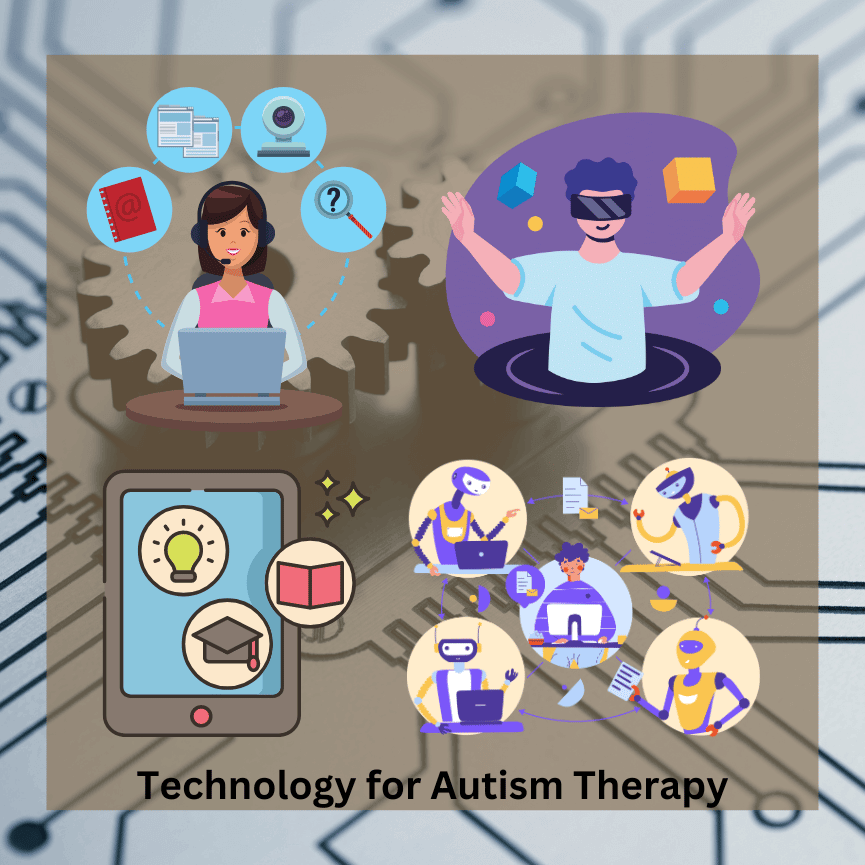
- Jul 20, 2024
- 167 Views
- 0 Comments
How To Leverage Technology For Autism Therapy
Autism Spectrum Disorder (ASD) is a complex developmental condition that affects communication, behavior, and social interaction. With the rapid advancement of technology, new therapeutic tools and methods have emerged, offering innovative ways to support individuals with autism. Technology's role in modern autism therapy has expanded significantly, providing unique opportunities to enhance traditional approaches and address various challenges faced by individuals with ASD.
Technological Innovations in Autism Therapy
The integration of technology in autism therapy has brought about several groundbreaking innovations. These include assistive communication devices, virtual reality (VR) and augmented reality (AR), and the use of robotics in therapeutic settings. Each of these technologies offers distinct advantages and has shown promise in improving the quality of life for individuals with autism.
Assistive Communication Devices
Assistive communication devices are designed to help nonverbal individuals or those with limited speech abilities communicate more effectively. These devices range from simple picture boards to sophisticated speech-generating devices. They enable users to express their needs, emotions, and thoughts, fostering better interaction with their surroundings. Case studies have demonstrated significant improvements in communication skills and social engagement among users of these devices.
Virtual Reality (VR) and Augmented Reality (AR)
VR and AR technologies are being utilized to create immersive learning experiences and social skills training for individuals with autism. VR environments can simulate real-life scenarios, allowing users to practice social interactions and develop coping strategies in a controlled, safe setting. AR, on the other hand, can enhance real-world experiences by overlaying digital information, making learning more interactive and engaging. Success stories from VR-based therapies highlight substantial progress in social behaviors and anxiety reduction.
Robotics in Therapy
Robotics has emerged as a valuable tool in autism therapy, with therapeutic robots designed to engage and interact with individuals with autism. These robots can be programmed to perform specific tasks, such as teaching social cues or providing emotional support. The interactive nature of robots helps capture the attention of children with autism, facilitating better engagement and learning. Examples include robots like NAO and KASPAR, which have been used successfully in various therapeutic settings.
Online Therapy Platforms
The rise of teletherapy has revolutionized access to autism therapy, making it more convenient and accessible for families. Online platforms offer various therapeutic services, including behavioral therapy, speech therapy, and occupational therapy. Teletherapy provides the flexibility of receiving therapy from the comfort of home, which can be particularly beneficial for individuals in remote areas. User experiences generally indicate high satisfaction with the accessibility and convenience of these services.
Educational Apps and Games
Educational apps and games tailored for individuals with autism offer interactive and engaging ways to enhance cognitive and social skills. These tools are designed to teach specific skills, such as language development, social interaction, and emotional regulation, through gamified learning experiences. Popular apps like "Endless Reader" and "Proloquo2Go" have been praised for their effectiveness and user-friendly interfaces.
Wearable Technology
Wearable devices, such as smartwatches and biosensors, are increasingly being used to monitor and track behaviors in individuals with autism. These devices can provide real-time data on physical activity, stress levels, and sleep patterns, offering valuable insights for therapists and caregivers. The impact of wearable technology on therapy outcomes includes improved behavior tracking and the ability to tailor interventions based on individual needs. Future trends suggest further integration of AI and machine learning to enhance the capabilities of wearable tech.
Challenges in Integrating Technology
Despite the benefits, integrating technology into autism therapy comes with challenges. The cost of advanced technological tools can be prohibitive for many families, and accessibility remains a significant issue. Additionally, proper training for therapists and caregivers is essential to ensure effective use of these technologies. Ensuring data privacy and security is another critical concern, particularly when dealing with sensitive information about individuals with autism.
Balancing Technology and Traditional Therapy
It's essential to balance the use of technology with traditional therapeutic approaches. Technology should complement, not replace, traditional methods. Personalized therapy plans that incorporate both technological and conventional techniques can offer the most comprehensive support. Feedback from therapists indicates that a blended approach often yields the best outcomes, addressing various aspects of development and well-being.
Research and Evidence-Based Practices
Ongoing research supports the effectiveness of technological interventions in autism therapy. Studies have shown positive outcomes in communication, social skills, and behavioral improvements. However, more long-term research is needed to fully understand the impact of these technologies and identify areas that require further exploration. Evidence-based practices ensure that the interventions used are grounded in scientific research and have proven efficacy.
Family and Caregiver Involvement
The involvement of families and caregivers is crucial in the success of technology-based therapy. Training and support for caregivers help them effectively use technological tools and collaborate with therapists. Many success stories highlight the positive impact of family involvement in therapy, emphasizing the importance of a supportive home environment.
Future Directions in Autism Therapy
Looking ahead, the future of autism therapy holds exciting possibilities with emerging technologies. Innovations such as AI-driven personalized therapy, advanced robotics, and improved wearable devices are on the horizon. These advancements have the potential to further enhance therapeutic outcomes and provide more tailored support to individuals with autism. Predictions for the next decade suggest continued integration of technology, leading to more effective and accessible therapy options.
The impact of technology on autism therapy is profound, offering new avenues for support, engagement, and development. As we continue to innovate and integrate these tools, it's essential to address the challenges and ensure that technology complements traditional methods. The future of autism therapy looks promising, with continued advancements paving the way for more inclusive and effective support for individuals with autism.



Comments - 0 comments till now